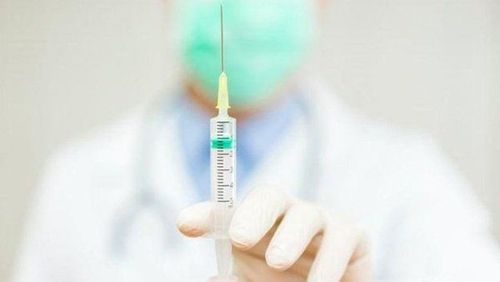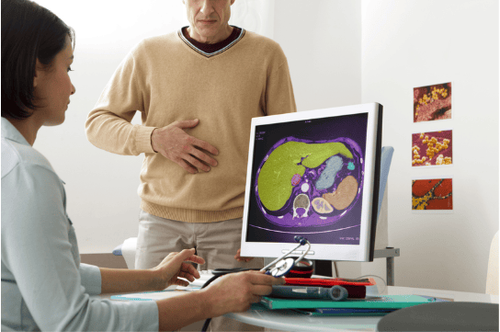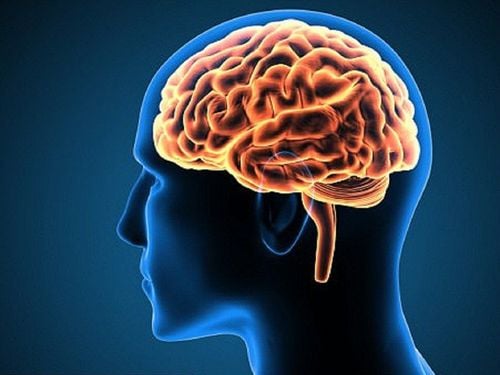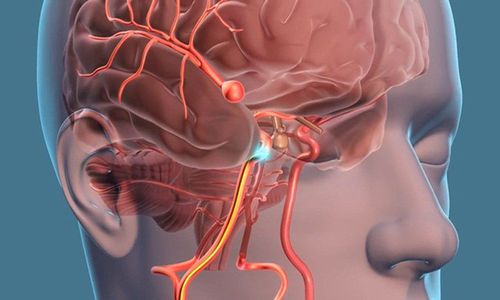This is an automatically translated article.
The article was professionally consulted with Master, Doctor Nguyen Quang Duc - Doctor of Nuclear Medicine - Department of Diagnostic Imaging and Nuclear Medicine - Vinmec Times City International General Hospital.1. Purpose of PET scan
Positron emission tomography (PET) is an effective tool to assess the biological activity of parts of your body and help identify a wide range of diseases, including including many cancers, heart and neurological diseases.Images from PET scans provide information that is different from those detected by conventional types of imaging such as computed tomography (CT) or magnetic resonance imaging (MRI). A PET scan or a combined PET/CT scan allows your doctor to better diagnose disease at the molecular level, assessing your health.
1.1 Cancer Cancer cells appear as bright spots on PET images because they have a higher metabolic rate than normal cells. PET scans can be helpful in:
Detecting cancer;
Check whether the cancer has spread;
● Evaluate the effectiveness of cancer treatment regimens;
Detect cancer recurrence.
PET scans must be examined carefully because noncancerous conditions can look like cancer and some cancers don't show up on PET images. Many types of tumors appear on PET scans, including:
● Brain;
Cervix;
Colorectal;
Esophagus;
Head and neck;
● Lungs;
● Lymphoma;
Malignant tumor;
● Pancreas;
● Prostate;
Thyroid.
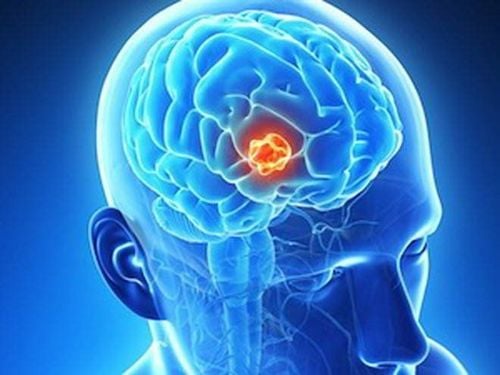
1.3 Neuropathy PET scans can be used to evaluate a number of neurological conditions, such as brain tumors, dementia, Alzheimer's disease, autism, cerebral palsy, and seizures.
2. Purpose of PET/CT
The PET/CT scan is a tool that provides both functional (PET) and anatomical (CT) imaging. For some types of cancer, a PET/CT scan is a way to find cancer and determine its stage, locate the cancer, and see if it has spread. Doctors also get information about the stage of the cancer and how the cancer affects the body's functions. Knowing this information will help doctors have a basis to choose the best treatment method and predict the patient's ability to recover.3. How is a PET/CT scan different from a CT scan?
A CT scan shows detailed images of the organs and tissues inside your body. On the other hand, PET scans can find abnormal organ activity and this technique may be more sensitive than other imaging techniques. PET scans can also show changes in the body earlier. Doctors use PET-CT scans to provide more information about cancer. In addition to finding out the stage of cancer, a PET-CT scan can help your doctor:● Find the right site for the biopsy;
● Evaluate the effectiveness of cancer treatment;
● Check for new cancer that develops after treatment has ended;
● Plan radiation therapy.
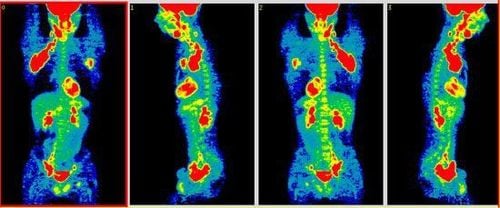
4. Notes when taking PET/CT
4.1 Preparation for PET-CT ● When you schedule a PET-CT scan, the medical staff will tell you what to prepare. Be sure to follow their instructions carefully to avoid affecting the shooting results.● Eating and drinking: you may be asked not to eat for 4 hours prior to the scan.
● Your medications and medical history: give your healthcare provider information about whether you can take medications or supplements on the day of your scan. Also, let them know if you have diabetes or other medical conditions. Specifically, diabetes can alter test results, and radioactive tracer can impact your blood sugar. If you are breast-feeding or may become pregnant, tell your healthcare provider.
Allergies. you need to tell your doctor if you are allergic to any medication or food, including any reactions that have occurred..
● Things you should avoid: Do not indulge in excessive activities like jogging or weightlifting 24 hours before the scan. Exercise can make the results less accurate.
● You should wear loose, comfortable clothing without zippers or metal buttons. You will need to remove any clothing with metal as metal can interfere with the shoot, such as belts, earrings, shirts with buttons or zippers, bras, and glasses. You may wear a hospital gown. You will be asked not to wear any jewelry during the PET/CT scan, so it's best to leave them at home on the day of the scan.
4.2 During the PET-CT scan The technician will put radioactive material into your body by intravenous method.
After injecting this substance, you must limit your movements and avoid activities, you can sit in a chair or lie down in bed comfortably. Movement or movement can cause radiopharmaceuticals to be trapped in the muscles, reducing image quality. It takes about 30 to 90 minutes for the radioactive material to reach the parts of the body that need to be scanned.
In some cases, the patient needs an injection of contrast material that can cause allergic reactions or side effects. Most reactions are mild, such as causing a rash or itching. Very rare cases of serious allergic reactions. Before starting this procedure, your doctor will ask you to urinate to empty your bladder.
When performing, you will be instructed to lie on the table with positions such as lying on your back, side or stomach, depending on the part to be examined. In some cases, a PET/CT scan is used to plan radiation therapy to treat cancer.
The staff will make you feel as comfortable as possible. You will need to lie still during the test. You may also need to keep your arms overhead.
Staff can also raise or lower the table during scanning. This helps them get images from different angles.
Total PET/CT scan time from preparation to finish usually takes 1 to 3 hours. Recording time on the device takes about 30 minutes. If the scanner scans a large area of the body, the examination may take longer. Staff will let you know how long it takes.
When the examination is over, you will still need to lie down on the table until the doctor is sure that the images obtained are not blurred. If they're not clear, you may need to do them again.
After the PET/CT scan, you can go about your normal activities. The technician will remind you to drink more water to increase the elimination of radioactive material before you leave.
4.3 After the PET-CT You can resume normal activities after the scan. The medical staff will instruct you to drink several glasses of water to help increase the elimination of radioactive materials and contrast from the body.

5. Is PET scan dangerous?
The benefits of these diagnostic methods often outweigh the risks. During this procedure, you will be exposed to a small amount of radioactive material. In such amounts, the radioactive material is shown to be harmless.Doctors can perform PET/CT scans with less radiation or limit the areas that need to be scanned. You will need to tell your doctor about information, such as the number of times you have had an imaging test, the method it was performed, your pregnancy status or suspicion that you are pregnant.
This information can help the doctor decide what other imaging tests should be done to reduce the risk. If you're concerned about radiation exposure, talk to your doctor, and see if you can get another test that uses less radiation.
Currently, Vinmec International General Hospital has become a leading prestigious address in disease screening with modern techniques, proud to be the first private hospital in Vietnam to deploy this technique. Modern and accurate diagnosis with the most modern 128-sequence PET/CT system in Southeast Asia, for accurate images and short imaging time, the team of doctors are leading experts with high expertise and rich experience. Experience creates trust for customers when experiencing medical examination and treatment services at Vinmec.
Please dial HOTLINE for more information or register for an appointment HERE. Download MyVinmec app to make appointments faster and to manage your bookings easily.
References: mayoclinichealthsystem.org, cancer.net




